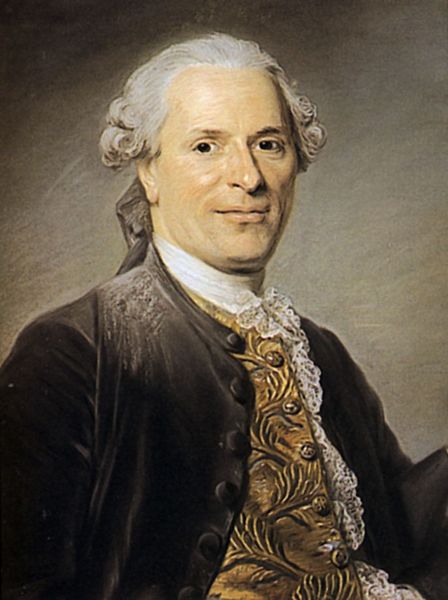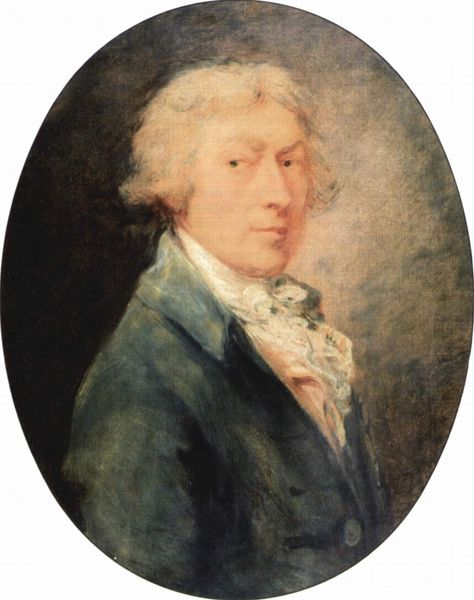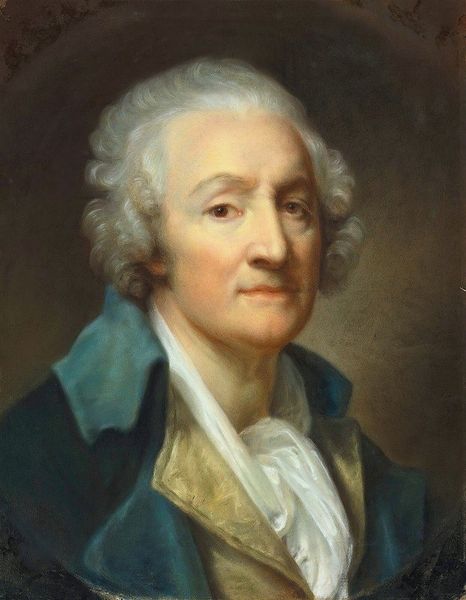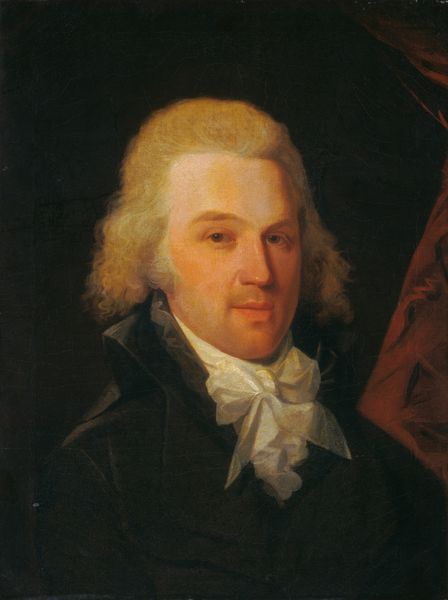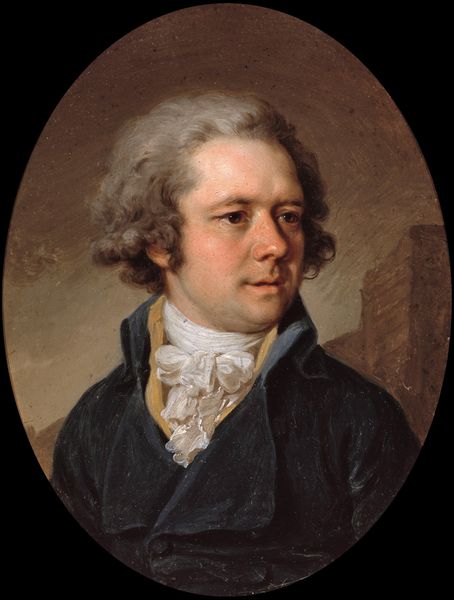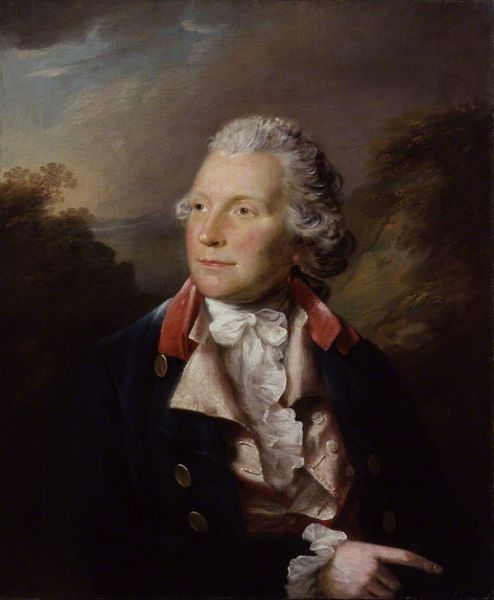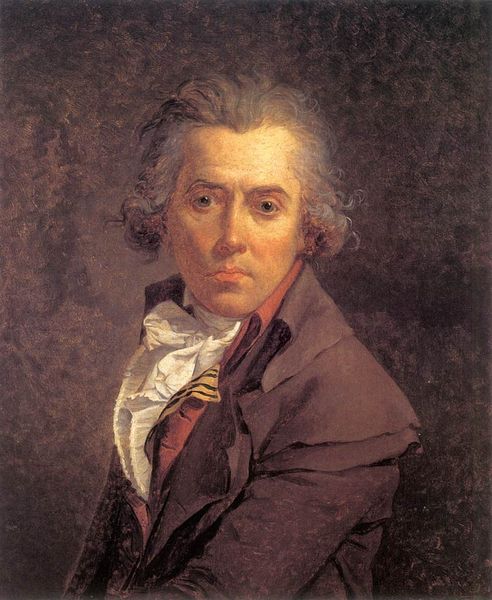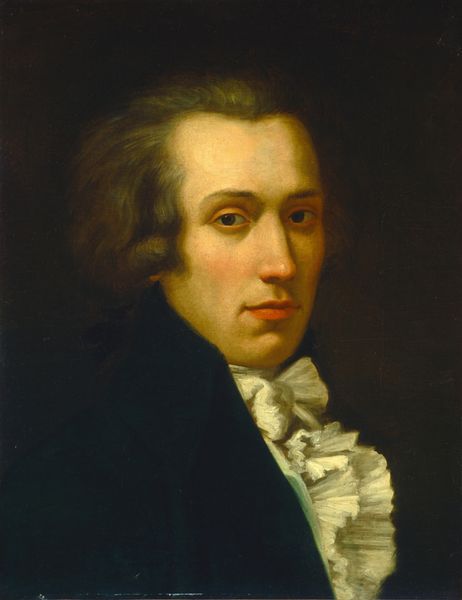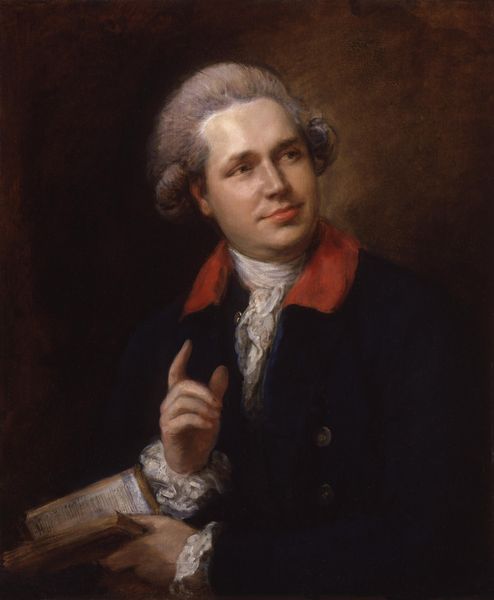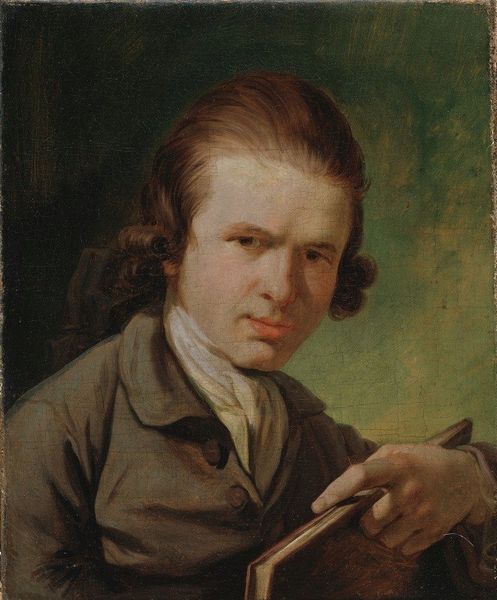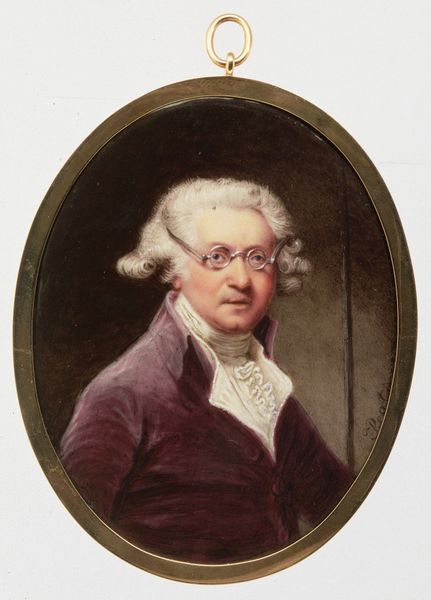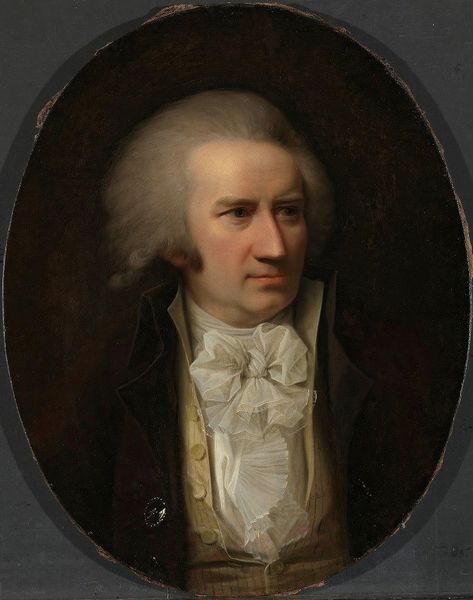
painting, oil-paint
#
portrait
#
painting
#
oil-paint
#
romanticism
#
academic-art
Dimensions: 40 x 30 cm
Copyright: Public domain
Curator: Standing before us is Pierre-Paul Prud'hon's oil painting "Nicolas Perchet," completed in 1795. Editor: Wow, the gentleman in the painting looks serious. Is he nervous about something? He seems so tightly wound; perhaps that crisp white necktie is too tight! Curator: He certainly has a pensive quality. Given the era, it is quite plausible that the subject wanted to convey seriousness and responsibility. Let us dive into the symbols. Do you notice the subject's attire? Editor: It’s very proper and dignified. And those colors! It gives the work a stately aura, but still seems a little melancholic to my eye. Perhaps the blues and whites contribute to the overall restrained feel? It contrasts beautifully with his powdered wig though! Curator: I agree. That contrast creates a dynamism. The painting’s Romanticist influences also hint at a deeper inner life that Academic art alone couldn't express. Consider that Prud’hon uses that Romantic sensibility to evoke a whole social and historical milieu through the psychology of the subject. The painting is more than just a rendering of a person; it captures the mood of an era. Editor: So much detail—it makes one consider the artist's own emotions too. Was he personally fond of Perchet? Or did he capture his character without investing too deeply? These little glimpses of the past have such intrigue; they make one reflect on all of those whose portraits were never painted at all. Curator: The painting exists within a symbolic order—an aesthetic ideology, so to speak—of class, power, and historical consciousness. This ideology serves as the code the painting wants us to accept as truth. It’s a visual symbol of history being shaped, in real-time, right before our eyes. Editor: Right. In a way, he's forever caught in a specific historical frame, and yet, by looking at this portrait, the past merges with the present—creating a different future for all of us here, experiencing the painting.
Comments
No comments
Be the first to comment and join the conversation on the ultimate creative platform.
